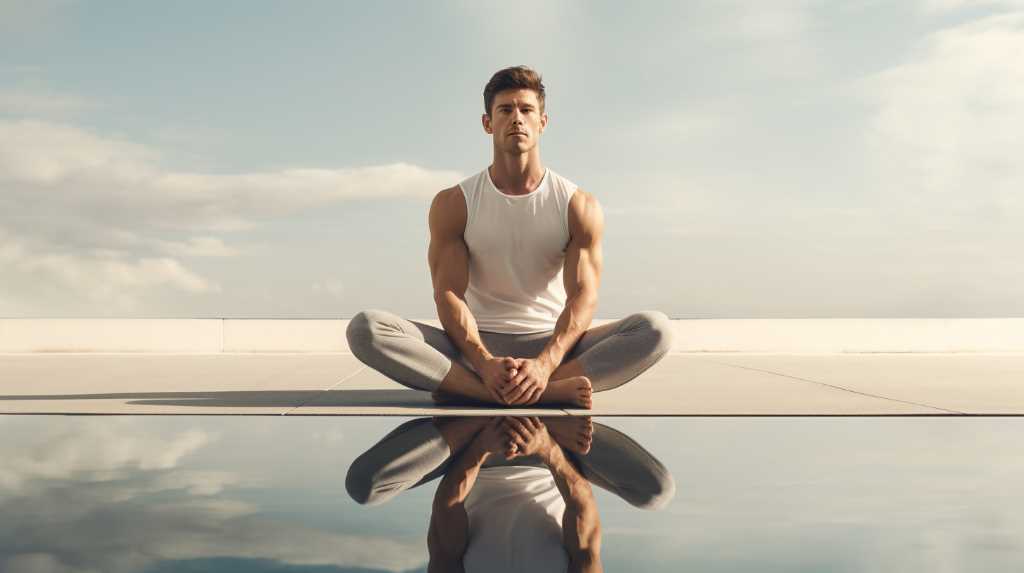As an athlete, you’re familiar with the physical demands of training and competition, but you might not always notice the tension that builds up in your muscles.
Progressive Muscle Relaxation (PMR) is a technique used in sports to help athletes relax and relieve muscle tension. It involves systematically tensing and then relaxing different muscle groups in the body. By doing this, athletes can become more aware of tension in their muscles and learn how to release it, which can improve performance and prevent injuries. PMR is often used as a part of a warm-up or cool-down routine, or as a relaxation exercise before or after training or competition.
You’ll learn to identify and control the sensations of muscular tension and relaxation, leading to a safer and more focused approach to your sport.
By incorporating PMR into your routine, you ensure your muscles and mind remain in prime condition, allowing you to perform at your best while minimizing the risk of injury.
Key Takeaways
- Progressive Muscle Relaxation (PMR) is a technique developed by Edmund Jacobson in the 1920s that involves systematically tightening and then relaxing different muscle groups.
- PMR helps athletes reduce stress, improve concentration, and identify/control sensations of muscular tension and relaxation.
- PMR plays a role in athletic performance by reducing tension in specific muscle groups, lowering anxiety levels, and promoting improved focus, concentration, and overall mood.
- Integrating PMR into training regimens enhances performance and reduces injury risk, as it reduces muscle tension and anxiety, improves mood states and mental clarity, and ensures a healthier, more agile body that is primed for any challenge.
Understanding Progressive Muscle Relaxation
Progressive Muscle Relaxation (PMR) is a technique you can use to reduce tension in your body and improve your athletic performance by systematically tightening and then relaxing different muscle groups. Developed by Edmund Jacobson in the 1920s, PMR is now widely recognized for its effects on progressive muscle tension relief and deep relaxation.
To use PMR, you’ll focus on tensing and relaxing each muscle group during your training sessions. This method helps you identify where you hold stress and teaches you how to release it, enhancing athletes’ performance by promoting mental clarity and physical readiness.
PMR’s Role in Athletic Performance
Mastery of PMR techniques enables you to enhance your physical performance by directly addressing the mental barriers that often impede peak athletic execution. By regularly practicing the Progressive Relaxation technique, you’re not only training your body but also conditioning your mind to manage and reduce stress and anxiety. This mental and emotional regulation can significantly boost athletes’ performance.
- Help reduce tension: PMR targets specific muscle groups to release built-up tension.
- Reduce anxiety: Lowering high anxiety levels ensures a calmer state of mind during competitions.
- Improve focus: With decreased tension and anxiety, concentration improves.
- Enhance mood states: Regular PMR practice can improve overall mood, contributing to better performance.
- Promote recovery: Relaxing muscles post-exercise aids in faster recovery and readiness for the next challenge.
Benefits for Sportspersons
As an athlete, you’ll experience numerous benefits from integrating Progressive Muscle Relaxation (PMR) into your training regimen, such as enhanced performance and reduced injury risk. PMR serves as a cornerstone among relaxation techniques, enabling you to systematically reduce muscle tension and anxiety, which are common impediments to your best performance. It’s not just about the physical edge; PMR can significantly improve mood states, paving the way for mental clarity and an enhanced focus that’s critical in competition.
Moreover, the practice has been linked to better sleep quality and lower instances of high blood pressure, both of which contribute to your cardiovascular health and overall well-being. By adopting PMR, you’re not just investing in your sports career; you’re ensuring a healthier, more agile body that’s primed for any challenge.
Implementing a PMR Routine
To start your PMR routine, find a quiet space where you won’t be interrupted for the next 10-20 minutes. Progressive Muscle Relaxation (PMR) is designed to release tension and reduce anxiety through a systematic approach to relaxing specific muscle groups.
An effective relaxation program involves:
- Sitting or lying down in a comfortable position.
- Concentrating on your breath to initiate a state of calm.
- Tightening and relaxing each muscle group, starting from your toes and moving upwards.
- Holding tension for about five seconds before releasing.
- Noticing the contrast between tension and relaxation to enhance your awareness.
Ensure you’re focusing on the sensation of releasing tension without rushing the process. Safety is paramount, so if any discomfort occurs, ease up on the specific muscle group being worked.
How Does Progressive Muscle Relaxation Benefit Athletes in Sports?
Progressive muscle relaxation can provide numerous benefits for athletes. By systematically tensing and relaxing muscle groups, athletes can improve their ability to manage stress and anxiety, enhance their overall performance, and reduce the risk of injury. Incorporating progressive muscle relaxation into their training routine can help athletes achieve peak physical and mental condition.
Common Mistakes and Misconceptions
Having established the basics of a PMR routine, you might still encounter common errors and misconceptions that can hinder its effectiveness in your sporting regime. It’s crucial to recognize that Progressive Muscle Relaxation (PMR), also known as Jacobson relaxation, isn’t just a tool for anxiety reduction; it’s a performance enhancement technique. Regularly practicing PMR, focusing on one muscle group at a time, helps to manage muscle tension and promote a state of relaxation essential for recovery and optimal performance.
Don’t fall into the trap of thinking relaxation techniques like PMR, autogenic training, or relaxation and music therapy are non-essential extras. They’re integral to your well-being and can complement your training, reduce insomnia, and improve your physical condition, far beyond just mitigating stress.




